How Long Do LED Strip Lights Last? A Complete Guide
Table of Contents
Wondering how long LED strip lights last before purchasing one for your residential or commercial use? Well, strip lights come with a long lifespan, but their longevity depends on your maintenance as well.
In this article, I have explained when and how LED strip lights fail and the basis for manufacturers’ lifespan claims–

LED Strip Structure, Lifespan, And Testing
Let’s take a look at the key parts of LED strips, how their lifespan is measured, and the testing methods–
Key Components Of An LED Strip
LED strips comprise several vital elements, such as LEDs, Flexible Printed Circuit Boards (FPCB), and resistors. These strips are fabricated using the Surface Mount Technology (SMT) Assembly Process, enabling the mounting of LEDs, resistors, and other components on the FPCB.
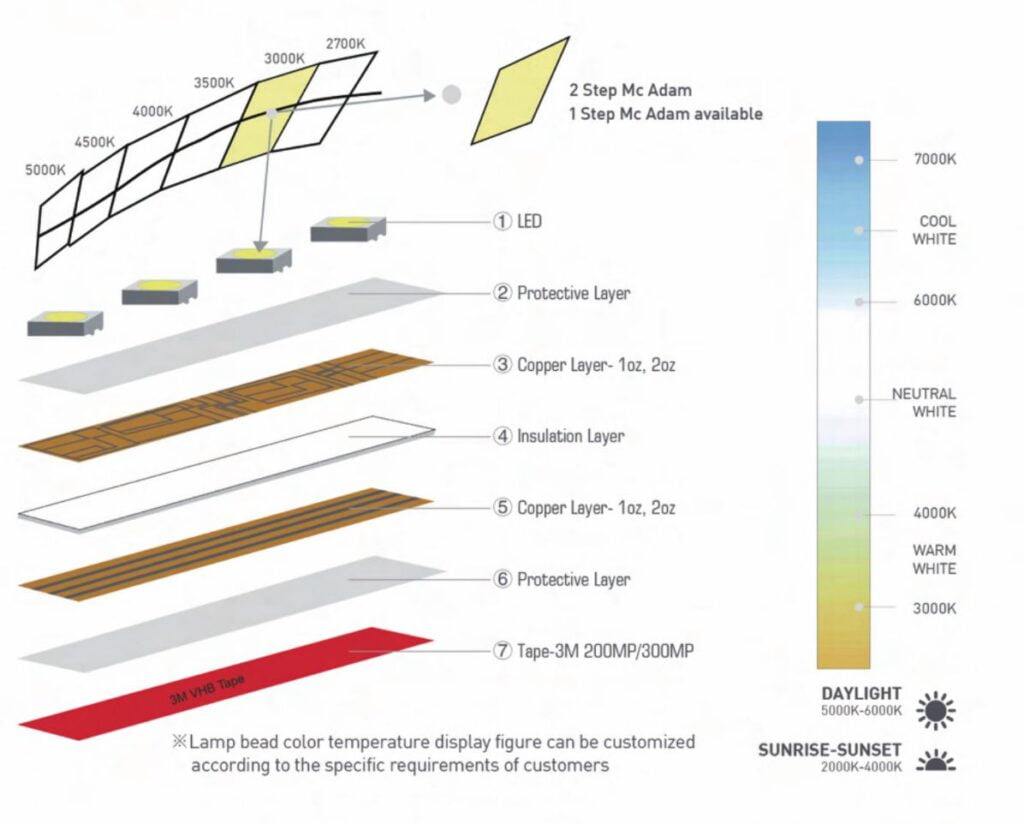
Specific LED strips for outdoor or underwater use can be encased in silicone or PU glue.
It’s important to note that LED strips with high IP ratings may have a shorter lifespan than their IP20 counterparts. This is because strips with high IP ratings can’t dissipate heat as effectively. Generally, LEDs produce higher light output in more relaxed environments, while higher temperatures tend to lower their output.
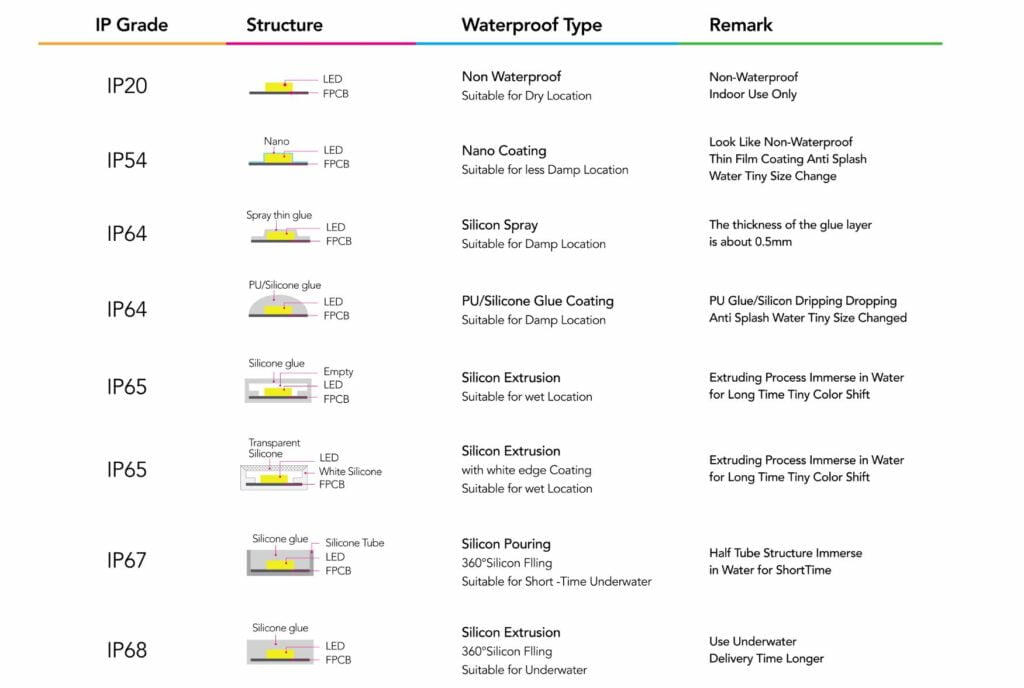
The Surface-Mount Device (SMD) LED plays a vital role in the LED strip, as its lifespan essentially dictates that of the LED strip. So, how do we estimate the lifespan of LEDs?
LED Lifespan And The L70 Principle
LEDs display unique longevity compared to traditional incandescent bulbs, which tend to flicker over time. Instead, LEDs gradually diminish in light output. Instead of suddenly failing, LEDs slowly lose brightness over time. Unless damaged by things like power surges or physical impacts, an LED strip will keep working until its light becomes too dim to be useful.
However, when does understanding LEDs become too dim? Mainly, it depends on the lighting needs. But the lighting industry agrees that when an LED loses 30% of its original brightness (meaning 70% brightness remains). This is called the L70 standard, which measures how many hours it takes for an LED’s light to fall to 70% of its starting brightness.
Bedises, LED lifespan is often shown as LxByCz (h). This means:
- After a certain number of hours,
- x% of the original brightness is left,
- y% of the LEDs have dropped below the target brightness,
- z% of the LEDs have completely failed.
Therefore, L70B10C0.1 (50,000 h) refers: after 50,000 hours, the LEDs should still provide at least 70% of their original brightness. And up to 10% of the LEDs might be dimmer than 70%. Finally, it indicated complete failure is allowed in only 0.1% of the LEDs.
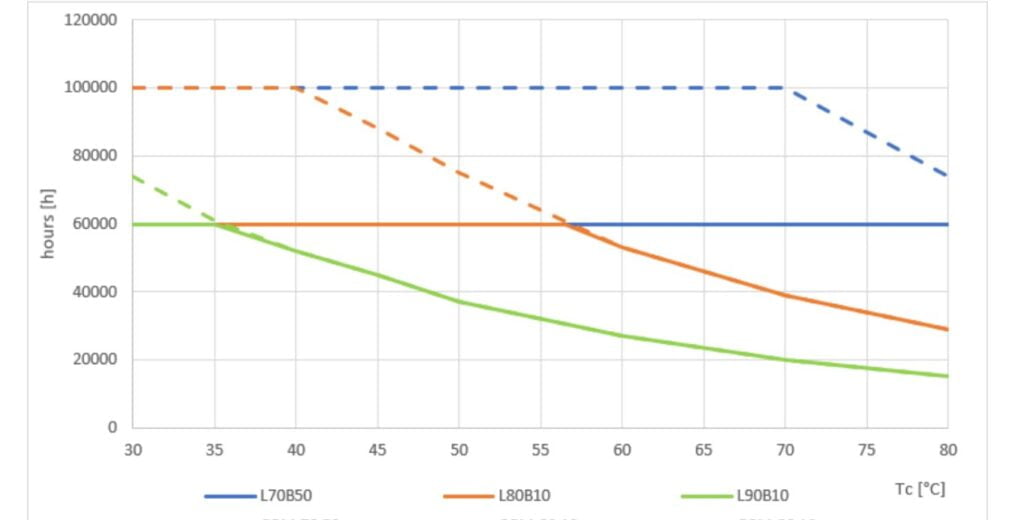
Calculation Of L70: Determining Light Output Percentage
L70 shows the percentage of light an LED keeps after a certain time. It is measured using a standard test called LM-80. This test was created to set a common method for checking how long LEDs from different brands last.
Basically, a group of LEDs is run under fixed conditions like set temperatures and electric currents in LM-80 testing. And their brightness is checked every 1,000 hours, up to 10,000 hours. This test is usually done by independent labs to make sure the results are fair and accurate.
Therefore, the best LED manufacturers often have LM-80 reports for their products. And trustworthy LED strip suppliers provide these reports. However, one problem with LED life testing is that it takes a long time. Even if the LEDs are on all the time, testing for 10,000 hours still takes about 14 months. Testing for 50,000 hours would take almost six years.
To solve this problem, the TM-21 method was created. It uses the early LM-80 data to predict how long the LEDs will last. For more information, you can check the TM-21-11 report, which talks about predicting LED brightness over time.
LM-80 reports usually show the L70 lifetime, but sometimes you need L80 or L90 values. Don’t worry! I’ve made an Excel tool that can quickly change L70 lifetime into L80 or L90 lifetime for you. For further details, refer to the TM-21-11 report, which focuses on projecting the long-term lumen maintenance of LED light sources.
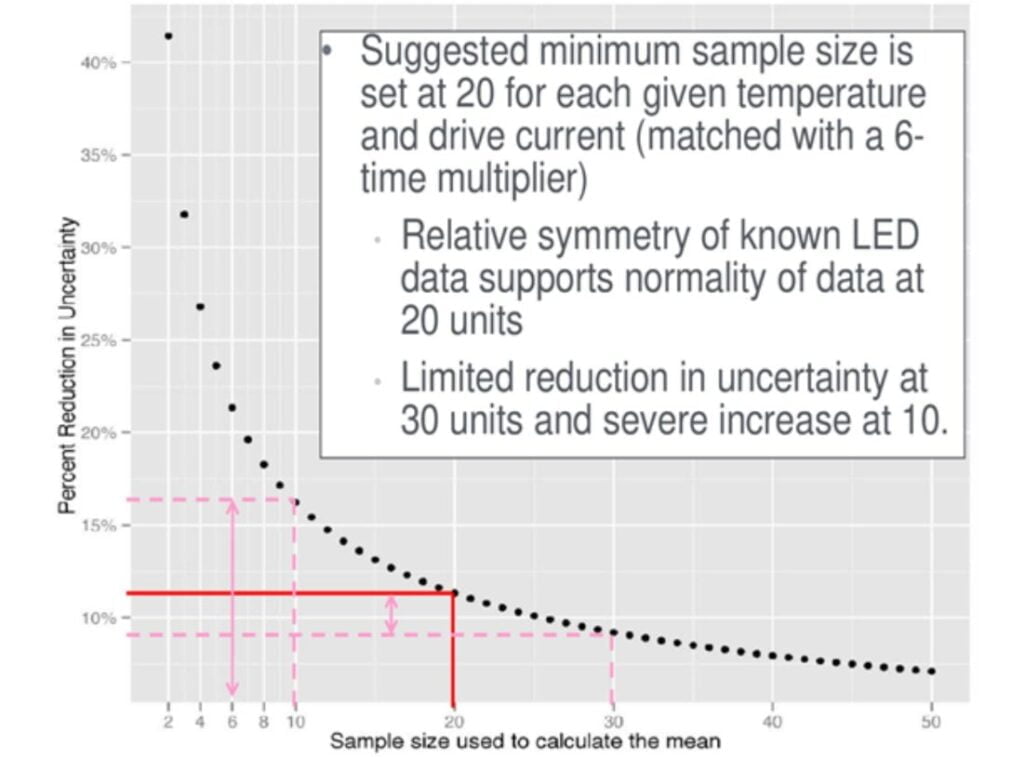
LED Strip Longevity: How LED Quality And Other Factors Affect Lifespan?
Here, I have mentioned some factors that affect the lifespan of the LED strips–
1. Flexible Printed Circuit Board (FPCB)
Our FPCBs are designed precisely, featuring high-quality, double-layer pure copper weighing 2-4 oz. These top-notch boards guarantee the seamless flow of substantial current, effectively minimizing heat generation, and facilitate rapid dissipation.
Considering the impact of heat on the lifespan of LEDs, it becomes imperative to explore effective heat dissipation solutions. We maximize heat dissipation potential by securely attaching the LED strip to an aluminum profile, significantly reducing the operating temperature.
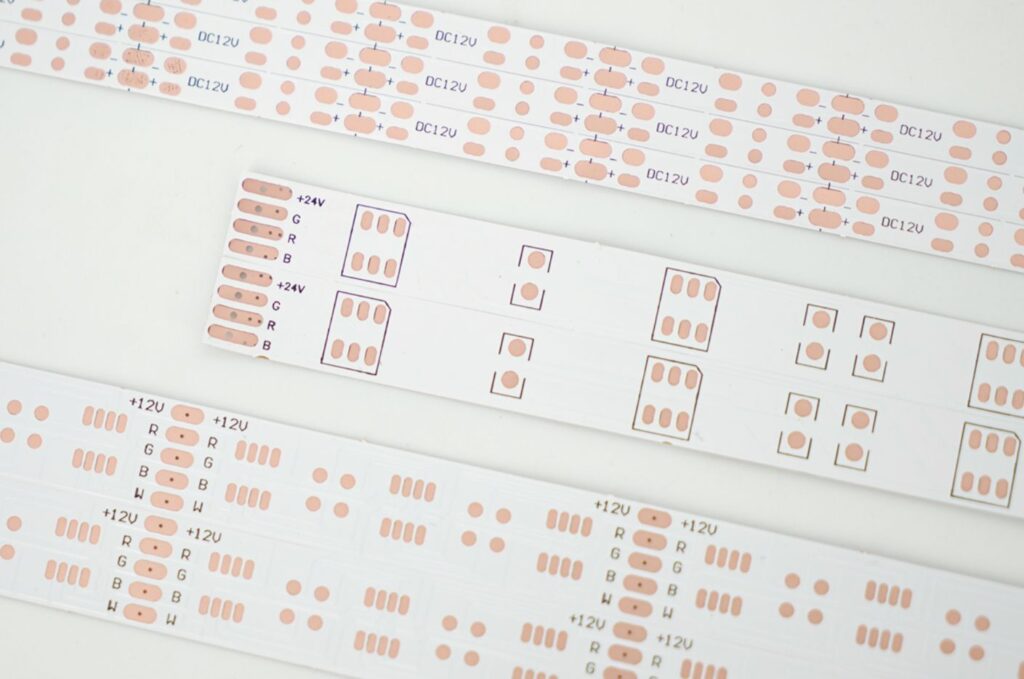
2. Double-sided Tape
We exclusively utilize the 3M brand VHB tape at MyLikeLed for optimum performance and thermal conductivity. However, it’s essential to be cautious of suppliers offering generic or counterfeit adhesive products. The key to achieving a durable installation and efficient heat transfer lies in using high-quality tape.

3. Resistors
Resistors ensure LEDs operate at the intended brightness. It’s worth noting that resistor values can vary between batches. Hence, it is advisable to source resistors from reputable companies.
Always prioritize the use of high-quality resistors. Inferior ones can shorten the lifespan or even damage the LED strip.
Avoid overpowering your LEDs! Although they can initially appear brighter, they will fail prematurely. Unfortunately, some of our competitors engage in this practice. Excess heat generated can also pose a safety hazard when installed on flammable materials.

4. Power Supply
The power supply is a critical component as well. Selecting a reliable, brand-name power supply that guarantees quality is essential. A substandard power supply produces unstable voltages exceeding the working voltage of the LED strip, leading to its burnout.
Ensure that the power of the LED strip remains within the rated maximum capacity of the power supply. We recommend not exceeding 80% of the power supply’s maximum rated capacity for the LED strip to enhance stability over extended periods.

5. Heat Dissipation
Heat significantly impacts the lifespan of LEDs. Therefore, when using LED strips, it’s vital to address heat dissipation promptly. And consider installing the LED strip in a well-ventilated location. If budget permits, affixing the LED strip to an aluminum profile is highly recommended. Aluminum is an excellent heat-dissipating material, allowing for effective dissipation and extending the LED strip’s lifespan.
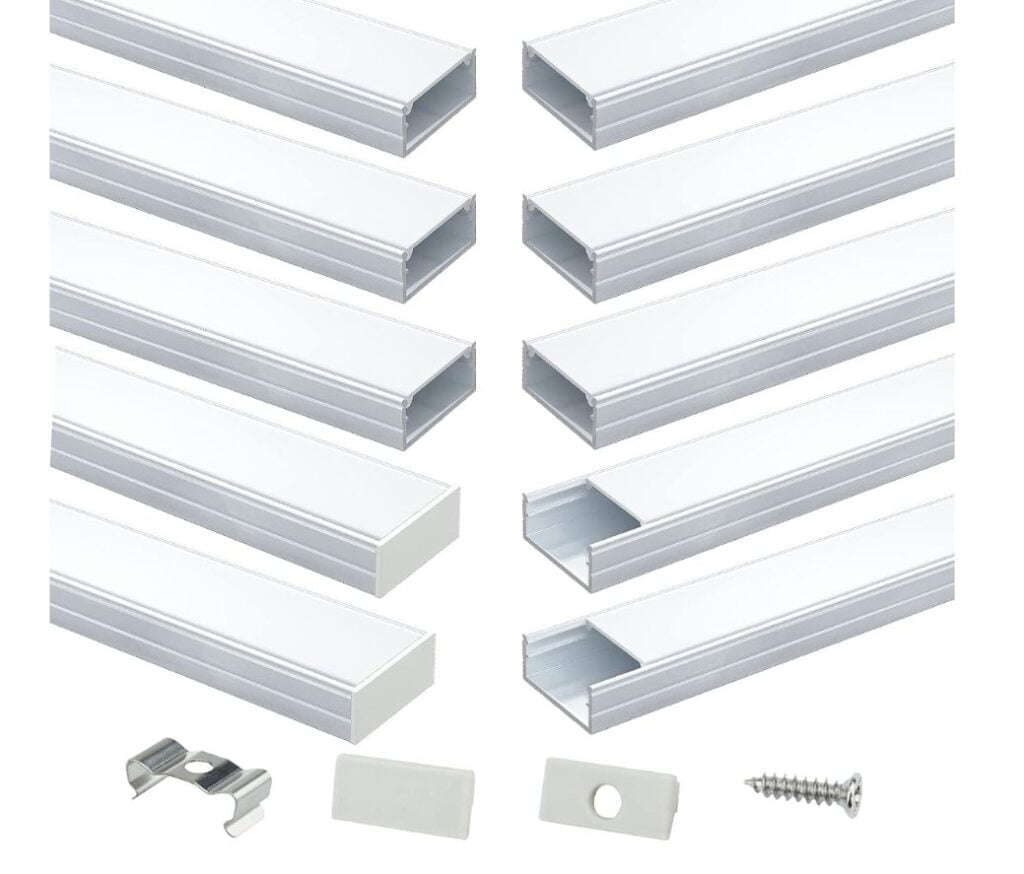
Signs That Indicate The LED Strips Need To Be Replaced
Let’s see some signs that indicate it’s time to replace the LED strips–
Dimming Of Light
A noticeable dimming of your LED strip lights is often one of the first signs that they are nearing the end of their lifespan. Over time, LEDs naturally lose efficiency, resulting in a gradual reduction in brightness. If you observe that your LED strips are no longer emitting the same level of light as when they were new.
Despite having a stable power supply and proper installation, it is a strong indication that the diodes are wearing out and the strip needs to be replaced.
Discoloration
Discoloration means the LED strip turning yellow, brown, or displaying uneven colors. This typically occurs as the LEDs age or if they have been exposed to excessive heat or voltage fluctuations.
Besides, you should know that discoloration not only affects the aesthetic quality of your lighting but also signals that the internal components are deteriorating. Therefore, it’s time to replace your lights.
Flickering Lights
Frequent flickering in LED strip lights often takes place due to a variety of issues. The reasons can be poor electrical connections, voltage drops, or failing components within the strip. While some flickering problems can be resolved by checking and securing connections, if the issue persists, it’s best to replace them.
Unresponsive Sections
When certain sections of the LED strip fail to light up, even though the rest of the strip is functioning. It usually means that those particular LEDs or the circuitry in that segment have burned out.
Unresponsive sections are a definitive sign that the affected part of the strip can no longer be repaired easily. Hence, the entire strip, or at least the faulty section, needs to be replaced to restore full functionality.
How To Prolong The Lifespan Of Your LED Strip Lights?
Several ways you can prolong the lifespan of your LED strip lights. For instance–
Choose High-Quality LED Strips
To increase the LED strip lights’ lifespan, choosing high-quality LEDs is the best option. Because high-quality strips come with strong components, the best LEDS, and well-designed PCBs. Often, well-known brands incorporate advanced heat dissipation features and better quality control. This way, they ensure your lights can withstand prolonged use without significant degradation.
Also, purchasing strips with a suitable IP rating is crucial, especially if they will be exposed to moisture or dust. This prevents environmental damage and extends their service life.
Ensure Proper Installation
Another essential thing that can affect the lifespan of the strip lights is proper installation. For this, you have to install the strip by following the manufacturer’s guidelines regarding mounting surfaces, cable lengths, and connection methods. Also, providing adequate ventilation around the strips helps dissipate heat; you can reduce the risk of overheating and fire hazards.
Moreover, you have to avoid bending the strips sharply or subjecting them to physical impacts during installation. Otherwise, these can cause internal wiring issues or broken solder joints.
Use The Correct Power Supply
Matching your LED strips with a compatible power supply to enhance their lifespan. Therefore, you can use a power source that delivers a stable voltage. This prevents under-powering, which can cause dimming or color shifts, and over-powering can burn out the LEDs. Always check the power requirements of your strips and avoid overloading the power supply with too many connections.
Regular Maintenance And Cleaning
If you inspect and clean the LED strip on a regular basis, it can increase its lifespan. For instance, you can clean dust, debris, and corrosion on the strips and their connections. For this, use a soft cloth, brush, and it will prevent dirt buildup.
Besides, look for issues like loose connections or others. And if you find any problem, fix it immediately to prevent further damage.
Conclusion
LED strips typically have a lifespan of approximately 50,000 hours. However, the actual longevity of an LED strip can be influenced by factors such as the quality of the raw materials used, including LEDs, FPCBs, and more.
At Mylikeled, we produce top-notch LED strips and LED neon flex. Our products undergo rigorous testing in state-of-the-art laboratories to ensure exceptional quality. Furthermore, we offer customization options for our LED strips and neon flex, enabling you to tailor them to your specific needs. Therefore, for premium products, don’t hesitate to contact Mylikeled now.
FAQs
Generally, the lifespan of the LED strip lights lasts up to 50,000 hours. With proper care, they can run for many years. This means if used for 8 hours daily, they can last 10 to 17 years. However, premium brands often offer longer lifespans. In contrast, cheaper strips can degrade sooner due to inferior components and poor heat management.
There are many factors that affect the strip lights’ lifespan. For instance, LED quality, heat dissipation, voltage regulation, and environmental conditions. On the other hand, excessive heat, power surges, humidity, and dust buildup can shorten their life.
Yes, you can extend their lifespan by ensuring proper installation and care. Also, an appropriate power supply, avoid running them at maximum brightness constantly, and install them with heat sinks or aluminium channels to improve cooling. At the same time, keeping them clean and protecting them from moisture or extreme temperatures also increases their lifespan significantly.
Absolutely, LED strip lights gradually lose brightness, a process called lumen depreciation. Typically, after 25,000 to 30,000 hours, they can emit about 70% to 80% of their original brightness. Factors like poor heat management, subpar materials, and constant high-power operation can speed up the rate of brightness loss.
Yes, LED strip lights can burn out, but it happens slowly. Instead of turning off all at once, they gradually get dimmer as they reach the end of their life. Over time, you will notice the lights losing brightness before they finally stop working completely.

Hi, I’m Xylia Xiong, a sales professional with 14 years of experience in the LED strip light industry. I specialize in providing tailored solutions, leveraging my expertise in LED products and the latest industry trends. Known for effective communication and problem-solving, I’m dedicated to helping lighting manufacturers, importers, and distributors achieve their goals.
Let’s work together to create customized solutions that exceed expectations.
Related Posts

The Best LED Strip Lights You Can Buy Right Now

Comparing WS2811 Vs WS2812B: Key Differences


